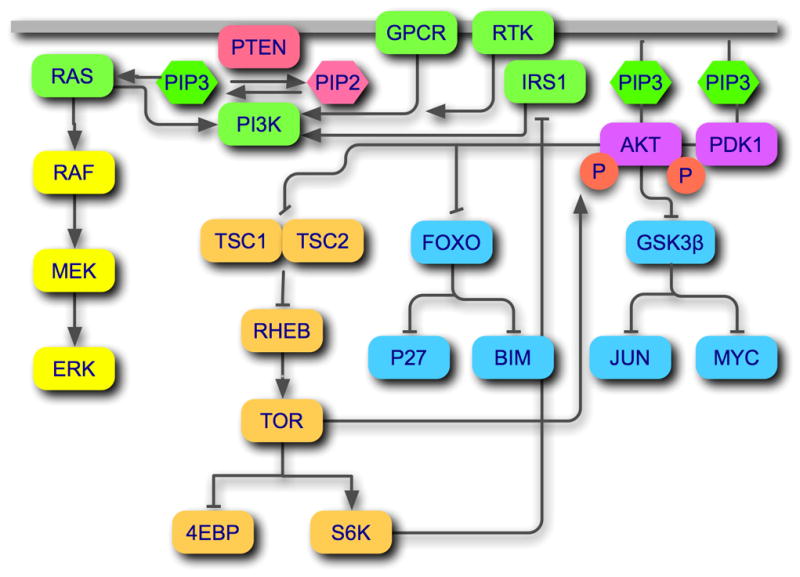Figure 1.

The canonical PI3K signaling pathway. PI3Ks can be activated by RTKs (with or without adaptors such as IRS1) or GPCRs. Ras is an additional positive regulator of PI3K, probably by facilitating membrane localization. The phosphatase PTEN dephosphorylates the product of PI3K, PIP3 at the 3-positiion and thus acts as the exact enzymatic antagonist of PI3K. PIP3 initiates downstream signaling by recruiting the serine-threonine kinases AKT and PDK1. PDK1 phosphorylates and thereby activates Akt. Three major signaling branches originate from Akt. Akt-mediated phosphorylation of GSK3β and of FOXO directly and indirectly controls transcriptional activities and cellular growth and survival (blue icons). The signal proceeding through the TSC complex, RHEB, and TOR affects primarily protein synthesis (beige icons). A positive feed-back loop extends from the TOR-RICTOR complex to Akt, resulting in additional activating phosphorylation of Akt. A negative feed-back loop consists of the S6K-mediated phosphorylation of IRS1.
